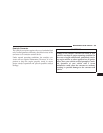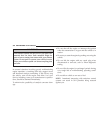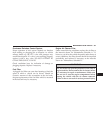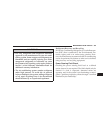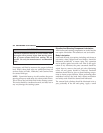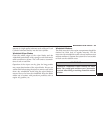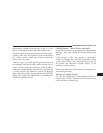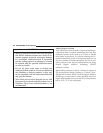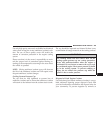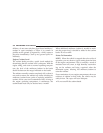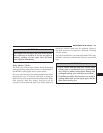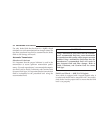
garden hose vertically down the face of the A/C con-
denser (if equipped) or the back of the radiator core.
Check the engine cooling system hoses for brittle rubber,
cracking, tears, cuts, and tightness of the connection at
the coolant recovery bottle and radiator. Inspect the
entire system for leaks.
With the engine at normal operating temperature (but
not running), check the cooling system pressure cap for
proper vacuum sealing by draining a small amount of
antifreeze/coolant from the radiator drain cock. If the cap
is sealing properly, the antifreeze/coolant will begin to
drain from the coolant recovery bottle. DO NOT RE-
MOVE THE COOLANT PRESSURE CAP WHEN THE
COOLING SYSTEM IS HOT.
Cooling System — Drain, Flush, And Refill
At the intervals shown in the appropriate “Maintenance
Schedule,” the system should be drained, flushed, and
refilled.
If the solution is dirty and contains a considerable
amount of sediment, clean and flush with reliable cooling
system cleaner. Follow with a thorough rinsing to remove
all deposits and chemicals. Properly dispose of old
antifreeze/coolant solution.
Discard old antifreeze/coolant solution according to rec-
ommended procedure.
Selection Of Engine Coolant
Use only the manufacturer’s recommended antifreeze/
coolant, refer to Fluids, Lubricants, and Genuine Parts for
correct antifreeze/coolant type.
MAINTAINING YOUR VEHICLE 367
7



